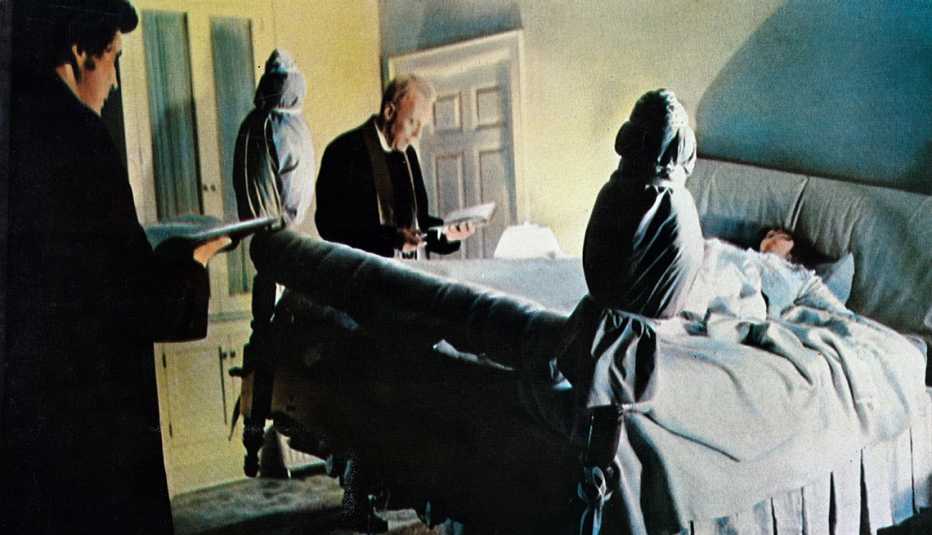AARP Hearing Center


Noted on many Best Horror Films lists as an iconic masterpiece and trendsetter, The Exorcist celebrates 50 years since its release on December 26, 1973. Emerging at a time when America began questioning the intersection of science and faith, The Exorcist has a revered place in American history for many reasons.
A great story
“The Exorcist has persisted because it’s not just a scary movie, but has great resonance with every member of the audience,” Nat Segaloff, author of The Exorcist Legacy: 50 Years of Fear, told AARP in a phone conversation. Segaloff was the publicist for the movie and a personal friend of the writer and director.
“There are really four stories going through it. One, a priest who lost his faith and winds up giving the ultimate sacrifice for a girl he’s never met. Secondly, it’s a wonderful detective story about a movie director who’s killed, and a little girl may be the culprit. Thirdly, it’s about an old priest, Father Merrin, who comes face to face with an old enemy. But most importantly, it’s about a mother who will do anything to save her daughter’s life.’’


You can subscribe here to AARP Experience Counts, a free e-newsletter published twice a month. If you have feedback or a story idea then please contact us here.
Records set
As the first horror movie nominated for a Best Picture Oscar — and as the highest-grossing film ever for Warner Brothers at that time — The Exorcist made financial history by signaling to studios that horror motion pictures were a profitable investment. It resulted in two sequels, two prequels, a spin-off and a television series, all attempting to capitalize on its success.
The Exorcist remains the most renowned work of film director William Friedkin, who died in August 2023, leaving behind cinematic gems like The French Connection, for which he won a Best Director Oscar, and To Live and Die in LA.
Written first as a 1971 novel based closely on the details of actual exorcisms performed in 1949 on a teen boy from Maryland, The Exorcist was author William Peter Blatty’s biggest commercial success. It sat on the top of The New York Times bestseller list for 17 weeks and remained on the list for over a year, selling more than 13 million copies in the United States alone. Blatty wrote the movie’s screenplay, earning him the Best Adapted Screenplay Academy Award.
Together, Blatty and Friedkin took the “good versus evil” story beyond America’s imagination to places no movie had ever been before. Blatty, who was raised by a devoutly Catholic single mother, told The Los Angeles Times in 2013 that he was surprised by the audience’s reception of the film.




































































More From AARP
Eight of the Most Interesting Cemeteries in America
These places of rest are known for their history, beauty and famous people interred
Get Spooky With Our Scary Movie Quiz
This bloodcurdling horror movies quiz will have you hiding under the covers
Breaking New Trails
The return of the American Western, just in the nick of time